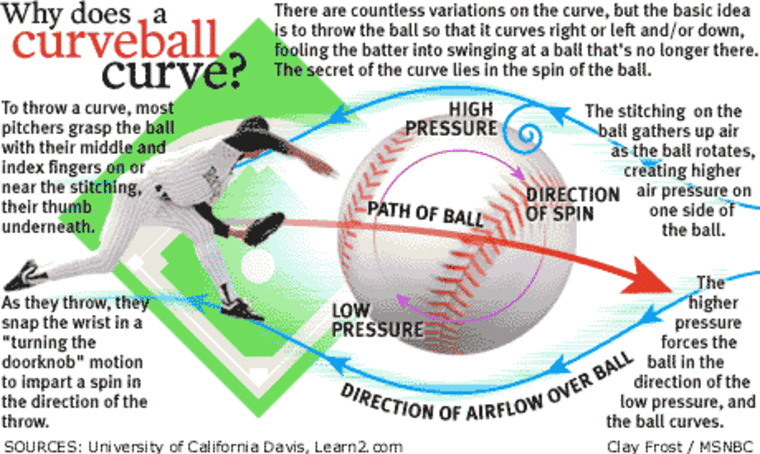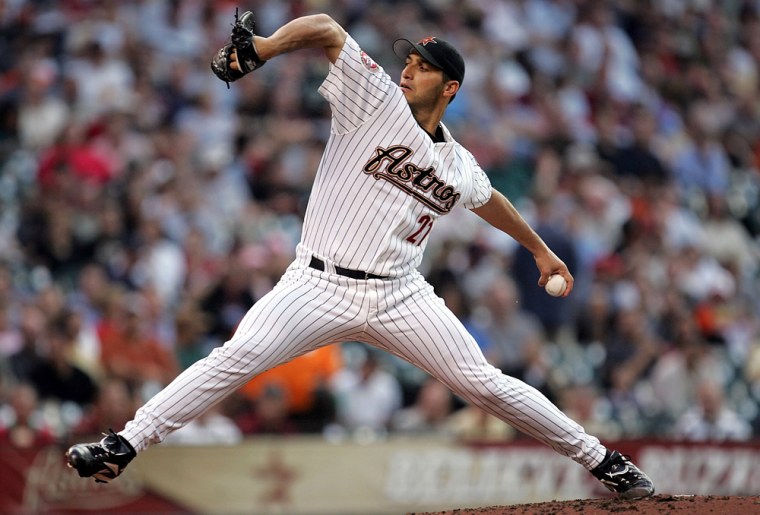Your Little League coach probably didn't know it, but every time he sent you to the plate with the instructions "keep your eye on the ball," he was giving you an impossible task.
And if you followed the coach's advice of positioning yourself directly under a pop-up, you probably struggled to catch balls in the outfield, too.
Ken Fuld, a baseball enthusiast and visual psychophysicist at the University of New Hampshire, has pored over numerous baseball studies and suggests that neither of these approaches produce optimal results.
Instead, much to your coach’s chagrin, you should try mimicking the quirks of the best Major League players.
Major League heat
At the Major League level, pitchers sling fastballs between 90 and 100 mph and sometimes a tweak faster. The ball moves far too swiftly for a batter to watch for its entire journey to home plate.
"In the last few feet before the plate, the ball reaches an angular velocity that exceeds the ability of the eye to track the ball," Fuld told LiveScience. "The best hitters can track the ball to within 5 or 6 feet of the plate."
After that, they shift their eyes to where they anticipate the ball will cross the plate. Some players "take" the first couple pitches of an "at bat" as they try to calibrate the movement and speed of a pitcher's offerings.
Killer curve
But a hitter is at the mercy of what the pitch does in those last few feet. That's when their eyes have left the ball and a nasty 12-to-6 curveball — a pitch named after the face of a clock and which drops top to bottom — can make even the best hitters swing out of their shoes. The pitch looks like it comes in straight, but during the instant the hitter is blind to the ball, a good curveball will have dropped a foot or more, and the batter will likely swing over the pitch.
Because of its straight trajectory, many hitters have an easier time hitting a four-seam, 100-mph fastball than a lively curveball. Forkballs, sinkers and split-fingered fastballs, all of which have tough-to-judge spin and dart around the strike zone, are similarly tough to hit.
On the flip side are knuckleballs. Even though they're slow-moving and have little to no spin, they flutter erratically, making them one of the most difficult pitches to connect with. As legendary hitting coach Charlie Lau once said, "There are two theories on hitting a knuckleball. Unfortunately, neither of them works."

The myth of the rising fastball
Fuld has pondered other aspects of hitting that will interest any fan.
When a hitter swings under the ball and misses, baseball announcers sometimes say the pitcher got him with a "rising fastball." But technically, this pitch cannot exist if thrown overhand — it's impossible for a pitch thrown downward to buck gravity and achieve upward lift.
The rising fastball deceives the hitter in almost the opposite way a good curve does. A 90-mph fastball will drop significantly less than one thrown at 80 mph. So instead of dropping a few inches in the last few feet, a fastball with some serious zip will maintain a nearly straight trajectory.
"If he thinks it's an 80-mph fastball, but it's really 90 mph, since it didn't drop it will appear to rise in that last instant," Fuld said. "It looks like it hops up, and that's the illusion of a rising fastball."
See the ball, catch the ball
Perceptions mess with minds in the field, too.
Any pro would tell you that the hardest ball to catch is a line drive smoked right at them. Sure, there's the fear that it might put a dent in your forehead, but it's the lack of visual information that makes the ball difficult to judge.
When a ball is hit to the left or right of a fielder, the player can observe the ball's velocity, acceleration, and angle to figure out where it might land. Some people might consider baseball players to be dumb jocks, but they're constantly doing geometry on the fly.
"Good players do not run to a place where the ball will land and then wait for it, but rather catch the ball while running," Fuld said. "This is contrary to what many coaches prescribe, which is to 'get under the ball and not drift on it.'"
When the ball is hit directly at a player, the only visual information available is velocity, making it difficult to determine the ball's path and even how long it will take to get there.
So the next time you see a player for taking a lazy, jogging approach to catch a fly ball, you should praise him for his math skills rather than blasting him for not hustling.
Assuming he catches it, of course.
